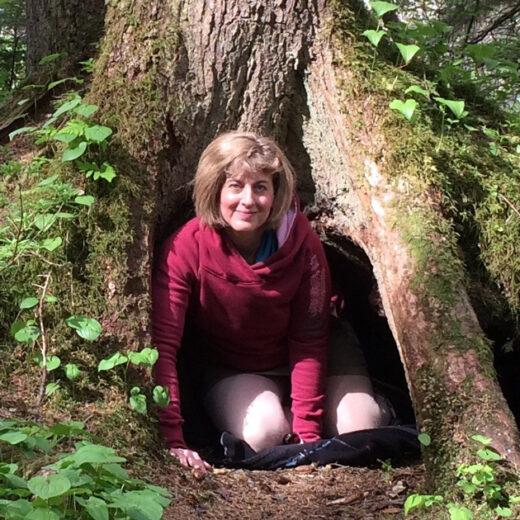Kat Pratt
October 2024

As an expert in bear-human interactions, it makes sense that Kat Pratt lives in Alaska, where she wrote research papers with a view of a bear sleeping outside her window. However, what might be surprising is how this Juno resident is making a big difference on the Appalachian Trail while living thousands of miles away from the nearest A.T. trailhead! With more than 25 years of experience in environmental education outreach, Kat started volunteering from afar with the Appalachian Trail Conservancy (ATC) several years ago while working on her Master’s degree in anthrozoology. Another student had told her about issues with bear-human interactions on the A.T. and she was inspired to apply her extensive experience in bear-human interactions, as well as data analysis, to help reduce conflict between bears and hikers on the Trail.
“While considerable research on bear-human interactions exists, it can be difficult to find the information that is relevant to the Appalachian Trail,” explained Monica Mogilewsky, ATC’s Visitor Use Management Data Manager. “Kat exhaustively reviewed the scientific literature and ATC bear encounter reports. She was able to identify trends in the black bear population specifically near the A.T. (rather than broader regional and national trends) and commonalities in negative bear-human interactions.”
Thanks to Kat’s thorough analysis of 164 dense reports of human-bear encounters on the A.T., ATC now knows where on the A.T. hikers are most likely to have a negative bear encounter and what factors are most likely to contribute to those encounters. This data is not only relevant in terms of management and facilities on the Trail, it also has substantial implications in effective hiker education.
“Our communications and visitor services teams are using this information to hone educational messaging about proper food storage, BearWise camping, and protecting bears from human activity while on the A.T.,” Monica said. “I’m certain that Kat’s work will help bears and humans continue to peacefully share the A.T.”
Kat’s volunteer experience demonstrates that you don’t have to actually be physically on the Trail to make a significant positive difference.
“If you’re interested in educational opportunities or research work that could be done remotely, set your available time frame and explore a project you can do from home,” she says. “Perhaps you’ll discover that you have a talent that’s special for the A.T.”
